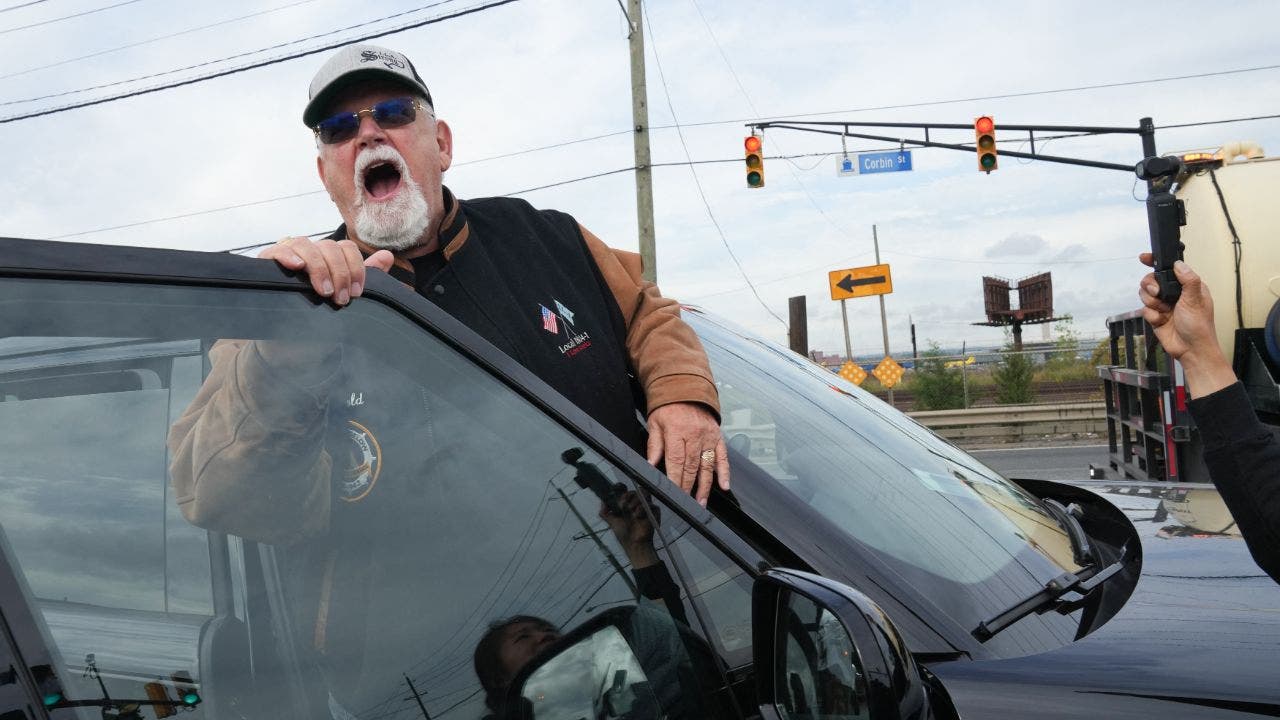Tech
Foreign nationals propel U.S. science. Visa limits under Trump could change that

President Donald Trump speaks at Snap-on tools, April 18, 2017, in Kenosha, Wis.
Kiichiro Sato/AP
hide caption
toggle caption
Kiichiro Sato/AP
Foreign-born workers account for about half of the doctoral-level scientists and engineers working in the U.S.
Many were initially hired under H-1B visas, which are granted to as many as 85,000 highly skilled specialists each year, allowing them to work in the U.S. for up to six years.
But the incoming Trump administration has signaled that it will crack down on H-1B visas, which could make it harder for universities, research institutions, and tech firms in the U.S. to find enough highly educated workers.
The result could look like what happened in the U.K. after Brexit made it harder for European scientists to work there, says Raymundo Báez-Mendoza, who runs a lab at the Leibniz Institute for Primate Research in Göttingen, Germany.
“A lot of countries in Europe benefited from Brexit, in the sense of capturing really amazing scientists that were working in Britain,” he says.
In the world of science, Báez-Mendoza says, “top talent is very mobile.”
His own resume demonstrates that.
Báez-Mendoza was born in Mexico City, got his master’s in Tübingen, Germany, his Ph.D. at the University of Cambridge in the U.K., then worked (under an H-1B visa) as a postdoctoral researcher at Massachusetts General Hospital and Harvard before returning to Germany.
Báez-Mendoza’s lab is equally international. It includes scientists from five countries, including the U.S.
Visas under Trump
In 2017, just months into his first term as president, Donald Trump spoke at Snap-on tools in Kenosha, Wis. Standing in front of a flag made of red, white, and blue wrenches, he unveiled a plan to restrict visas for foreign scientists and engineers.
“Widespread abuse in our immigration system is allowing American workers of all backgrounds to be replaced by workers brought in from other countries to fill the same job for sometimes less pay,” he said.
“This will stop,” he added.
Trump singled out H-1B visas in his speech, perhaps unaware that Snap-on used them to hire some of its employees.
Soon, he was issuing executive orders designed to restrict H-1B visas. And in 2020, he suspended new H-1Bs and some other temporary work visas.
President Biden would reverse many of these measures. But the events made an impression on Leili Mortazavi, a brain scientist who was born in Iran and is now completing a doctoral program at Stanford University.
“I really like Stanford, people here are great, the resources [are] amazing,” she says. “But I would have to see what kinds of changes happen under Trump.”
Mortazavi almost missed her chance to attend Stanford because of an executive order in early 2017 that became known as the “Muslim ban.” It temporarily closed the border to most people with an Iranian passport.
Mortazavi got a Canadian passport at the last moment.
Then, during COVID, Trump announced a plan that would have deported her and many other international students who were attending all classes virtually.
“There was talk about asking all the international students to go back home, which was a very, very stressful time,” she says. “Luckily it didn’t go through, but I still remember that very, very vividly.”
Mortazavi says with a second Trump administration about to begin, she’s worried about getting a visa to work in the U.S.
One reason is that Trump has named as a deputy Stephen Miller, the major architect of the president’s immigration strategy during his first term.
So Mortazavi is looking at jobs in other countries.
“University of Toronto has a lot of great labs relevant to my work,” she says. “I also visited Oxford and University College London last summer and would really be interested in working with them.”
Research institutions quiet for now
During Trump’s first term, businesses and universities went to court to challenge some of the changes to H-1B visas.
For the moment, though, these institutions are staying mum about the prospect of more restrictions.
Half a dozen universities and research institutions contacted for this article either did not respond or declined to make any public comment.
The Trump transition team did not respond to a request for information about the president-elect’s plans for H-1B visas.








